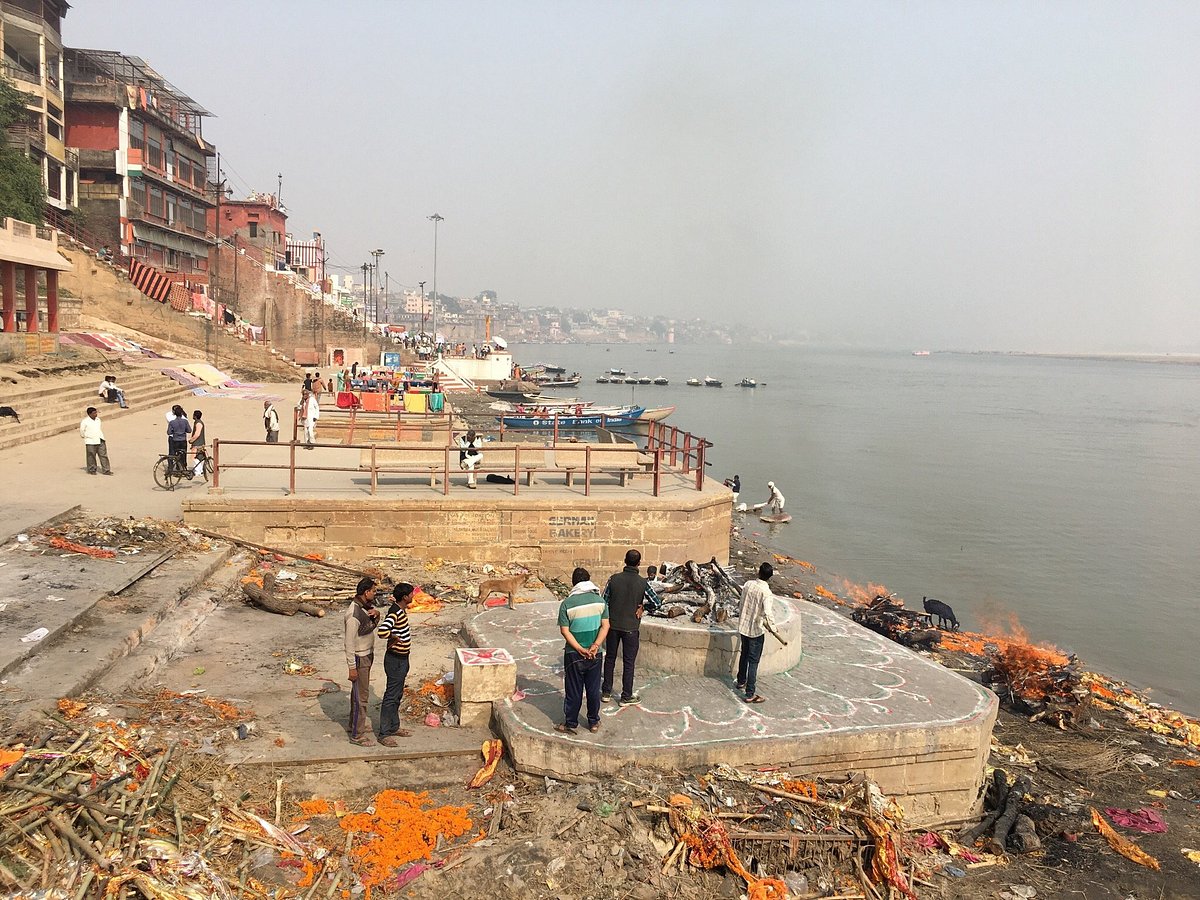
Harishchandra Ghat is another significant ghat in Varanasi, India, known for its cultural and religious importance. Here’s an overview:
Overview of Harishchandra Ghat
- Location: Varanasi, Uttar Pradesh, India
- Significance: It is one of the prominent ghats along the banks of the River Ganges and is renowned for its association with Hindu funerary rituals.
- Religious Importance: Similar to Manikarnika Ghat, Harishchandra Ghat is a sacred site for the performance of cremation rituals. It is believed to be one of the primary places where the dead are cremated to attain moksha (liberation from the cycle of rebirth).
- Historical Background: The ghat is named after the legendary Hindu king Harishchandra, known for his unwavering commitment to truth and dharma (righteousness).
Key Features:
Cremation Rituals: Harishchandra Ghat is a major site for cremations, often referred to as the “second Manikarnika Ghat.” It is considered highly auspicious for performing last rites.
Historical Significance: The ghat is linked to the story of King Harishchandra, who is said to have been a great example of truth and integrity. According to legend, he was forced to work at the ghat to fulfill his vows.
Cultural and Religious Activities: Visitors can witness traditional Hindu cremation practices and other rituals associated with death and rebirth. The ghat plays a vital role in the local religious and cultural landscape.
Visitor Information:
- Best Time to Visit: The ghat is accessible throughout the year, but visiting early in the morning or during sunset can offer a more serene experience.
- Dress Code: As with other sacred sites, modest clothing is advised. Respect for local customs and traditions is important.
- Photography: Be considerate of the solemnity of the site. Always ask for permission before taking photos, especially of people involved in ceremonies.
Harishchandra Ghat provides a profound insight into Hindu rituals and beliefs, offering visitors a unique perspective on the spiritual and cultural practices of Varanasi.